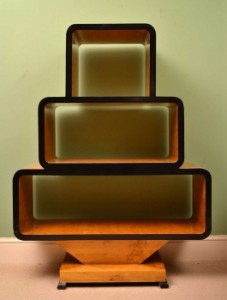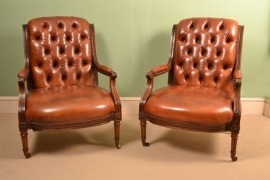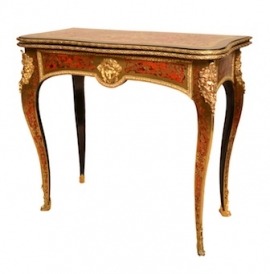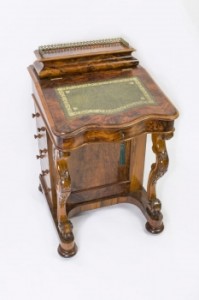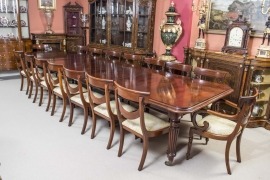Antique Furniture with the Quality to Last and the Beauty to be Timeless
A great range of prices, pieces and periods – how to choose that special item of antique furniture combing beauty, elegance, functionality and a sound investment
Buyers and collectors have a great variety of needs and wants in selecting antique furniture. Perhaps a unique piece such as this birdseye maple and ebonised Art Deco bookcase which could be used to add a special and functional finishing touch to a modern minimalist room by contrasting contemporary furniture.
Other people may be looking for a whole room or even house to be furnished in a specific antique style and collect complementary tables, chairs, cabinets, beds and desks as well as matching clocks, lights, paintings and also crockery and cutlery. Collectors of imposing, robust and practical Victorian antique furniture like the examples from our inventory below could create a stunning and imposing classic Victorian interior design from pieces like these:
Other buyers are looking for special signature pieces for a specific purpose such as well-established and successful businesses who might choose a very impressive antique furniture table like the one below to make a strong statement as the centrepiece to a Board Room.
Despite all these different requirements there are some basic guidelines that buyers should consider when buying antique furniture.
Follow your heart as well as your head (and your wallet)
Although much antique furniture appreciates in value and can be seen as a sensible investment, as with any market prices fluctuate and fashions change and even the experts sometimes fail in trying to second guess future values. It is a mistake to simply see antique furniture as a monetary investment, unless you are a professional dealer see asset appreciation as an extra benefit – what really matters is finding a piece of antique furniture that you love and is special to you and works aesthetically and practically in its intended setting.
Find antique furniture that has the wow factor and makes your heart beat a little faster, there are many great quality, beautiful pieces to fall in love with. If you the value increases as well then you’re really quids in.
Research is key
One of the joys of buying antique furniture is that every piece (and picture) tells a story. There is much fascinating history attached to these special pieces both in the lives and stories of the individual designer makers who created antique furniture and in the social, political and military history of the eras in which the pieces were made and were in vogue. Researching the background and context of antique furniture can be endlessly interesting and inspiring. It is clearly also important to do your research so you know the provenance and value of an intended purchase.
Don’t be afraid to ask the experts – at Regents Antiques we have over 30 years of experience, combining a wealth of knowledge with a real passion for the best antique furniture, and we are, of course, always delighted to advise and inform potential buyers.
Periods and styles
To qualify as antique furniture pieces must be over 100 years old. Pieces from the 20th century (such as very collectable Art Deco designs) are classified as vintage. There are many periods and styles of antique furniture and geographical variations. The primary English periods are-
- Jacobean 1600 to 1690 Simple, straight lines, strong and sturdy with Gothic influences
- Georgian 1714 to 1812 Mainly mahogany with elaborate carved legs
- Regency 1812 to 1830 More ornate romantic decorative styles
- Victorian 1837 to 1901 Heavy, dark and elaborately ornate
- Edwardian 1901 to 1910 Cleaner lines, lighter woods and blocky designs
French antique furniture can also be highly collectable and very beautiful, the main periods are-
- Louis XIV 1643 to 1715 Substantial, highly detailed, very ornate, may feature gold trimmings
- Louis XV 1723 to 1774 Elaborate with curved lines and asymmetry
- Empire 1804 to 1815 Heavy woods and decorative bronze mounts
- Louis Phillipe 1830 to 1846 Dark and decorative, signs of early mass production techniques
Buying and collecting antique furniture can be intensely rewarding especially if you follow these basic guidelines; look for those special pieces that really ignite your interest; research the pieces, the manufacturers, craftsmen and history of period; and where necessary ask the experts.
At Regent Antiques we are delighted to share this passion and show some of the many rare and beautiful examples of antique furniture we have discovered in our extensive search for the very special and the very best.


